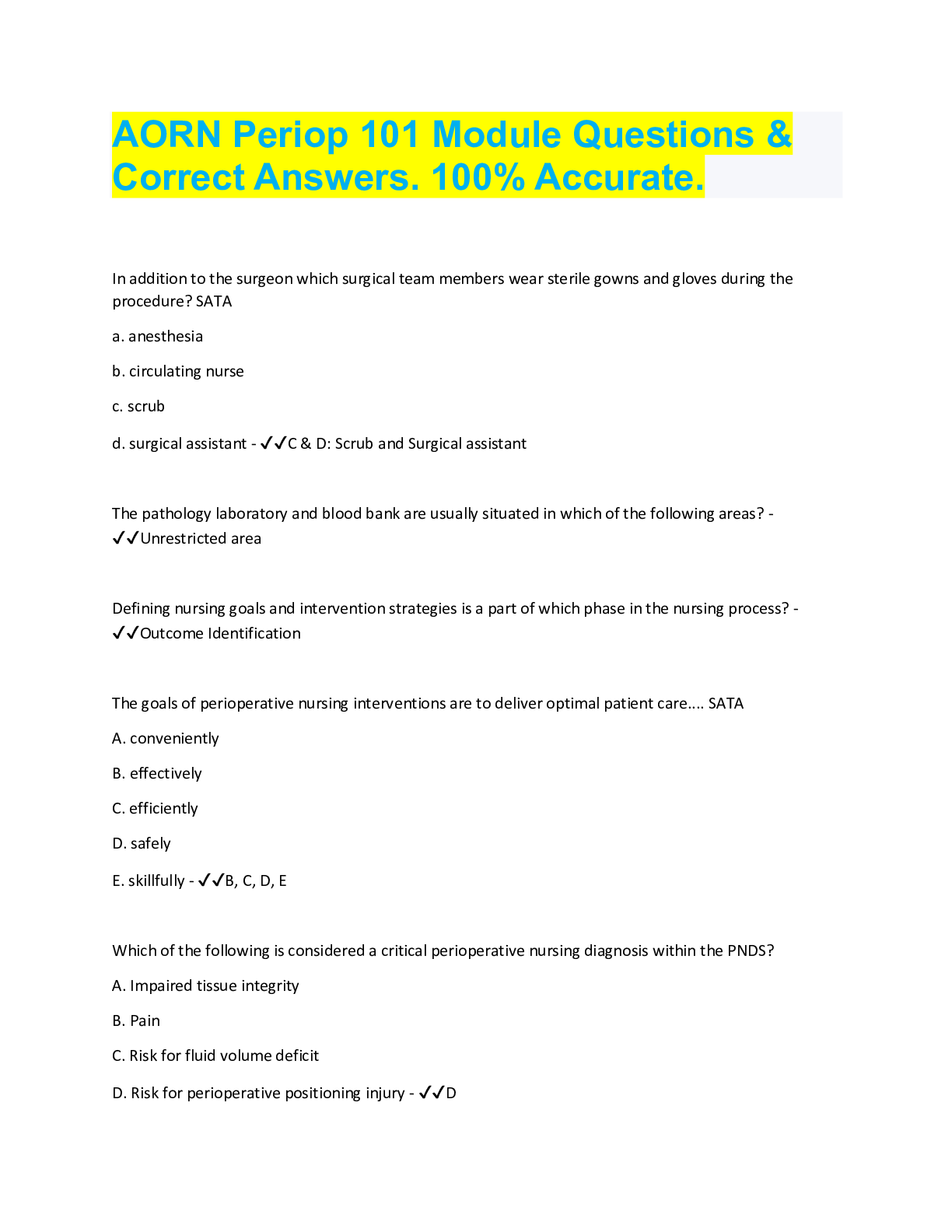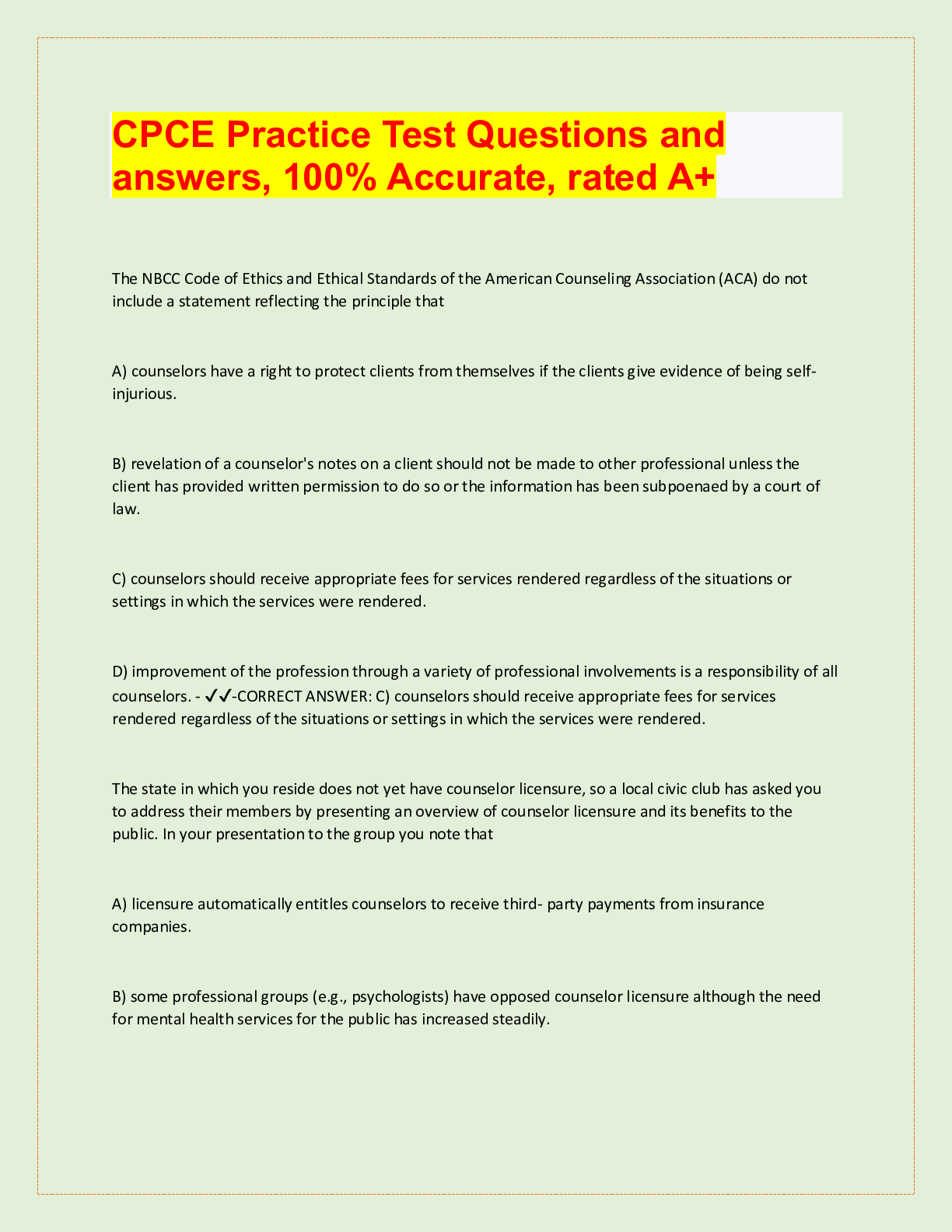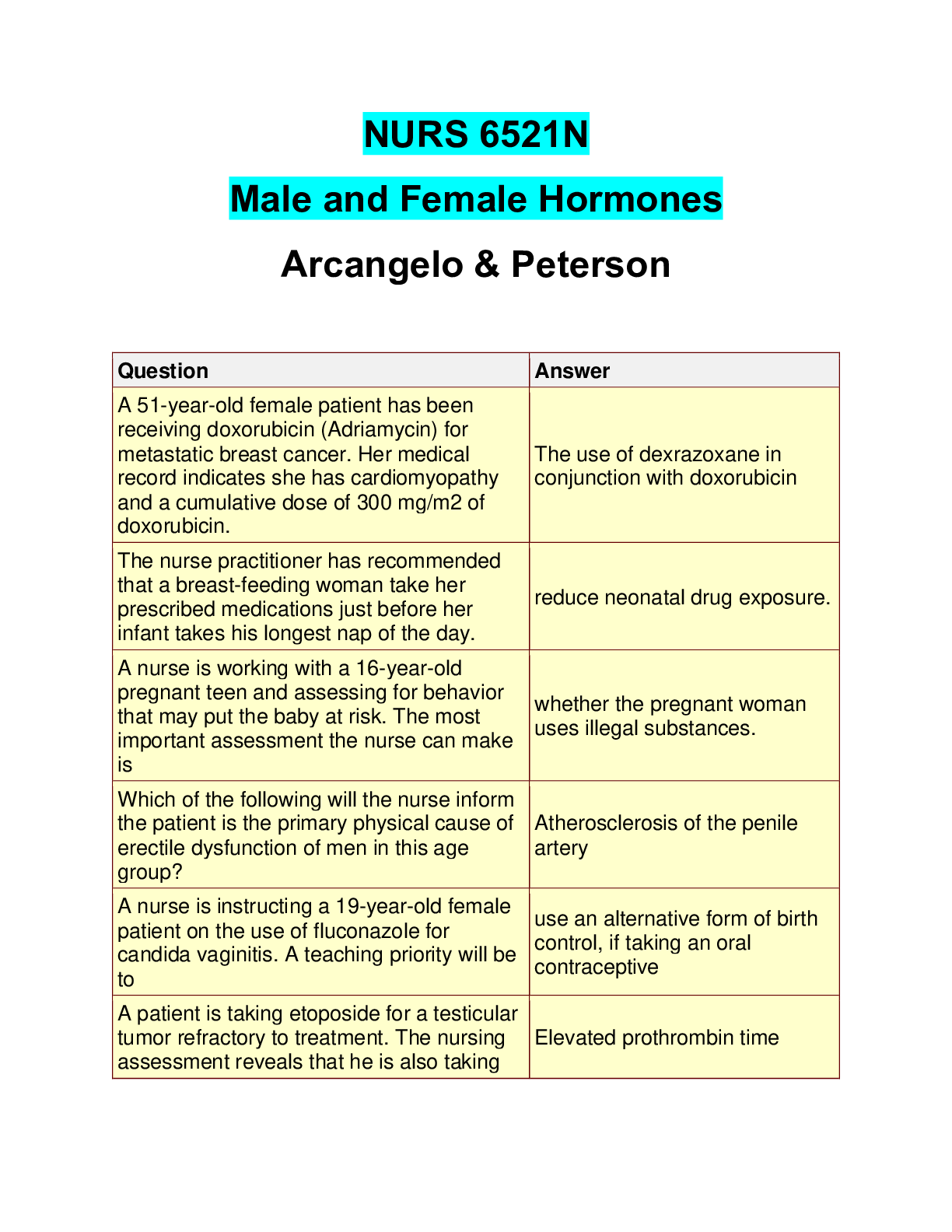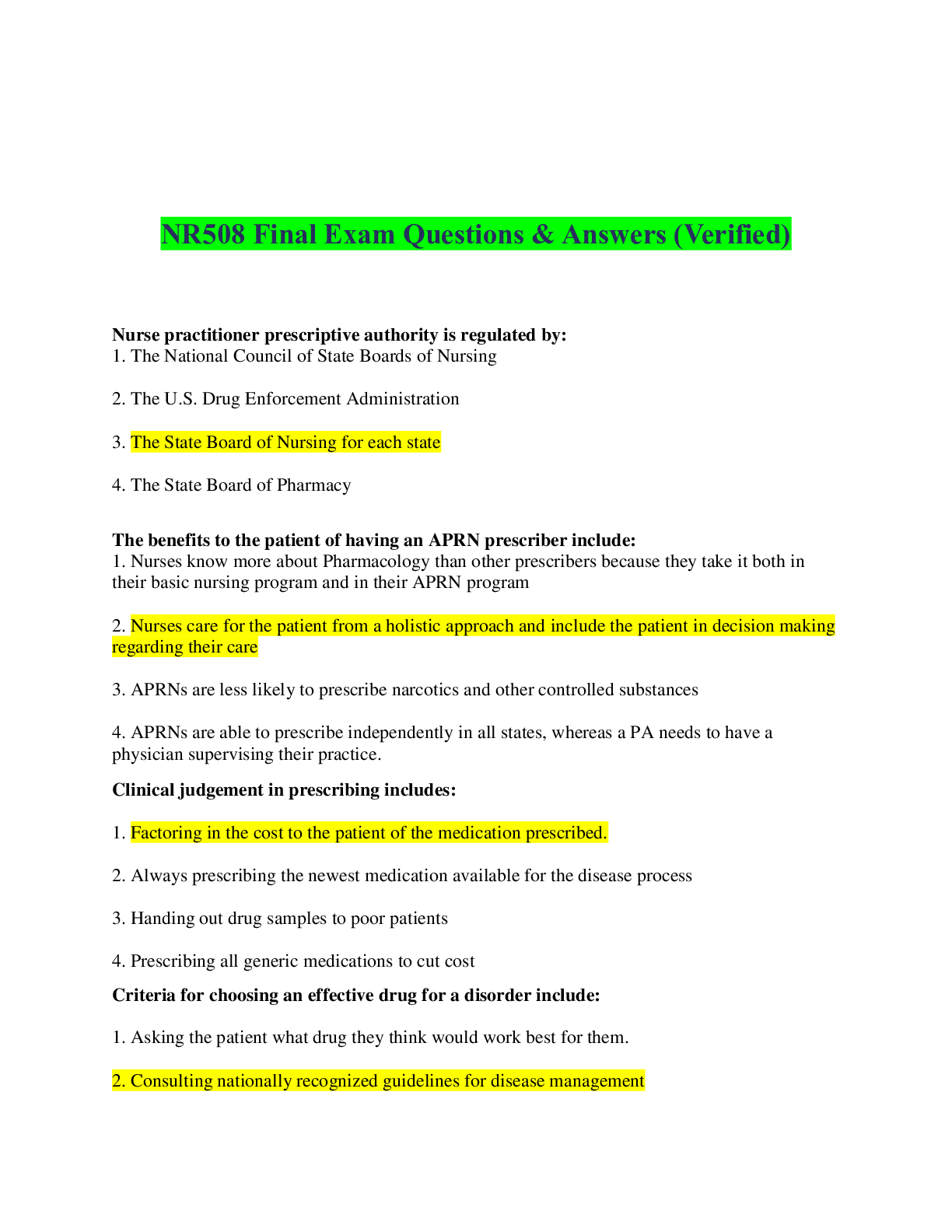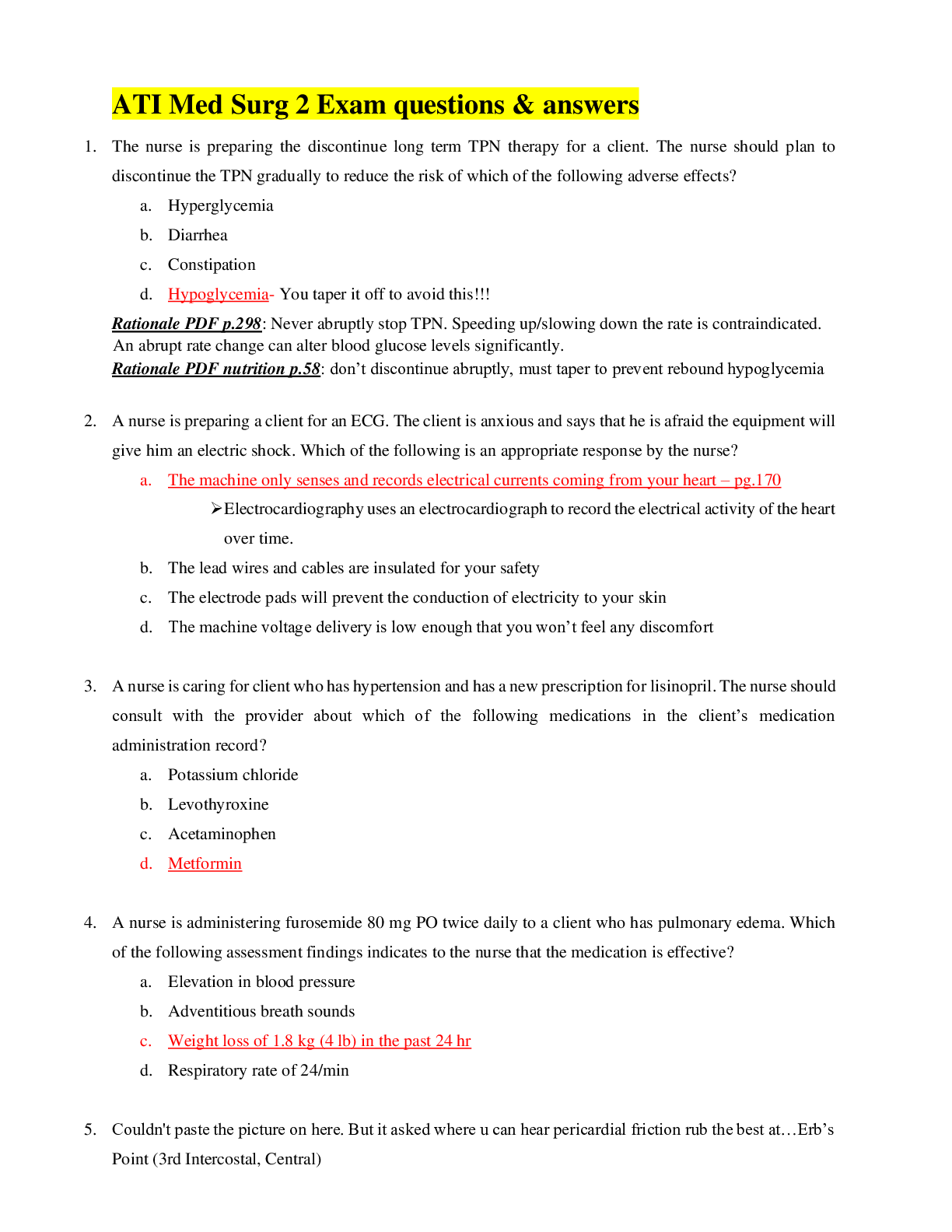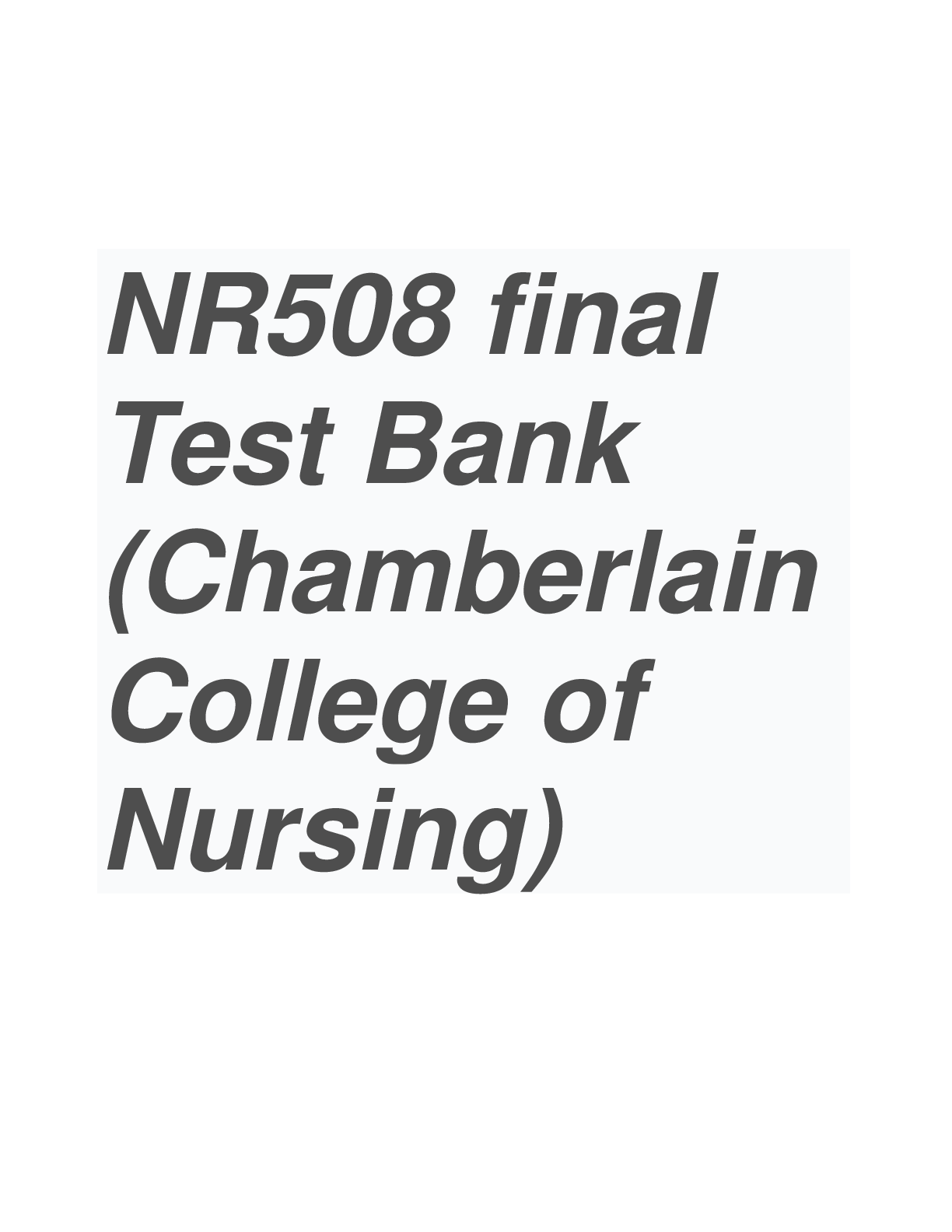Social Sciences > QUESTIONS & ANSWERS > DSM-5 Self. Exam Questions & Answers. 100% accurate. Graded A+ (All)
DSM-5 Self. Exam Questions & Answers. 100% accurate. Graded A+
Document Content and Description Below
DSM-5 Self. Exam Questions & Answers. 100% accurate. Graded A+ Which of the following statements about the development and course of autism spectrum disorder (ASD) is false? A. Symptoms of ASD a... re typically recognized during the second year of life (12-24 months of age). B. Symptoms of ASD are usually not noticeable until 5-6 years of age or later. C. First symptoms frequently involve delayed language development, often accompanied by lack of social interest or unusual social interactions. D. ASD is not a degenerative disorder, and it is typical for learning and compensation to continue throughout life. E. Because many normally developing young children have strong preferences and enjoy repetition, distinguishing restricted and repetitive behaviors that are diagnostic of ASD can be difficult in preschoolers. - ✔✔-B. Symptoms are not typically noticeable until 5-6 years of age or later. Explanation: Details about the age and pattern of onset are important and should be noted in the history. Symptoms of ASD are typically recognized during the second year of life (12-24 months of age) but may be seen earlier than 12 months if developmental delays are severe, or noted later than 24 months if symptoms are more subtle. The pattern of onset description might include information about early developmental delays or any losses of social or language skills. In cases where skills have been lost, parents or caregivers may give a history of a gradual or relatively rapid deterioration in social behaviors or language skills. Typically, this would occur between 12 and 24 months of age and is distinguished from the rare instances of developmental regression occurring after at least 2 years of normal development (previously described as childhood disintegrative disorder). A 10-year-old boy demonstrates hand-flapping and finger flicking, and he repetitively flips coins and lines up his trucks. He tends to "echo" the last several words of a question posed to him before answering, mixes up his pronouns (refers to himself in the second person), tends to repeat phrases in a perseverative fashion, and is quite fixated on routines related to dress, eating, travel, and play. He spends hours in his garage playing with his father's tools. What do these behaviors represent? A. Restricted, repetitive patterns of behaviors, interests, or activities characteristic of autism spectrum disorder. B. Symptoms of obsessive-compulsive disorder. C. Prototypical manifestations of obsessive-compulsive personality. D. Symptoms of pediatric acute-onset neuropsychiatric syndrome (PANS). E. Complex tics. - ✔✔-A. Restricted, repetitive patterns of behaviors, interests, or activities characteristic of autism spectrum disorder. Explanation: In DSM-5, the symptoms in the category of "restrictive, repetitive patterns of behaviors, interests, or activities" (Criterion B) associated with autism spectrum disorder demonstrated by this patient include stereotyped or repetitive motor movements, use of objects, or speech; insistence on sameness, inflexible adherence to routines, or ritualized patterns of verbal or nonverbal behavior; and highly restricted, fixated interests that are abnormal in intensity or focus. He needs to have only two out of the four symptoms in this category (along with meeting Criterion A) to qualify for the autism spectrum disorder diagnosis. The fourth symptom in Criterion B (which this patient does not display) is hyper- or hypo-reactivity to sensory input or unusual interest in sensory aspects of the environment. A 25-year-old man presents with long-standing nonverbal communication deficits, inability to have a back-and-forth conversation or share interests in an appropriate fashion, and a complete lack of interest in having relationships with others. His speech reflects awkward phrasing and intonation and is mechanical in nature. He has a history of sequential fixations and obsessions with various games and objects throughout childhood; however, this is not currently a major issue for him. This patient meets criteria for autism spectrum disorder; true or false? A. True. B. False. - ✔✔-A. True. Explanation: This young man presents with all three symptoms in Criterion A; his symptoms satisfy Criterion C, which requires childhood onset; and he meets Criterion D, which requires clinically significant impairment in functioning. Although he has only one symptom in Criterion B (stereotyped or repetitive speech) and the diagnosis requires two, the fact that he has a history of fixations and obsessions satisfies the criteria, such that he does qualify for a diagnosis of autism spectrum disorder. A 9-year-old girl presents with a history of intellectual impairment, a structural language impairment, nonverbal communication deficits, disinterest in peers, and inability to use language in a social manner. She has extreme food and tactile sensitivities. She is obsessed with one particular computer game that she plays for hours each day, and she scripts and imitates the characters in this game. She is clumsy, has an odd gait, and walks on her tiptoes. In the past year she has developed a seizure disorder and has begun to bang her wrists against the wall repetitively, causing bruising. On the other hand, she plays several musical instruments in an extremely p [Show More]
Last updated: 1 year ago
Preview 1 out of 39 pages
Instant download
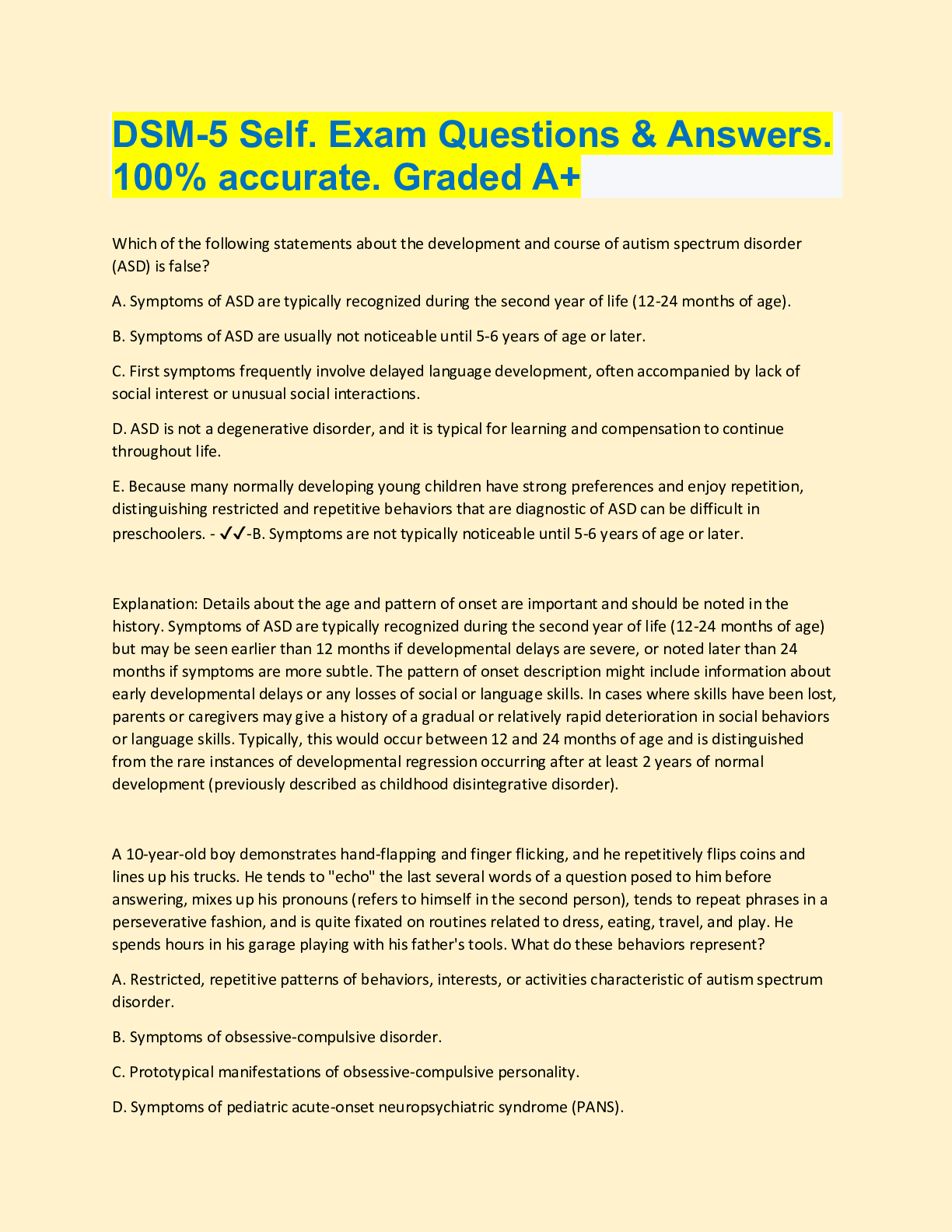
Buy this document to get the full access instantly
Instant Download Access after purchase
Add to cartInstant download
Also available in bundle (1)

DSM 5 Review Bundle, top Questions Exam. verified.
DSM 5 Review Questions and answers, 100% Accurate, rated A+. verified exam predictions.
By Topmark 1 year ago
$38
18
Reviews( 0 )
Document information
Connected school, study & course
About the document
Uploaded On
Mar 14, 2023
Number of pages
39
Written in
Additional information
This document has been written for:
Uploaded
Mar 14, 2023
Downloads
0
Views
63






